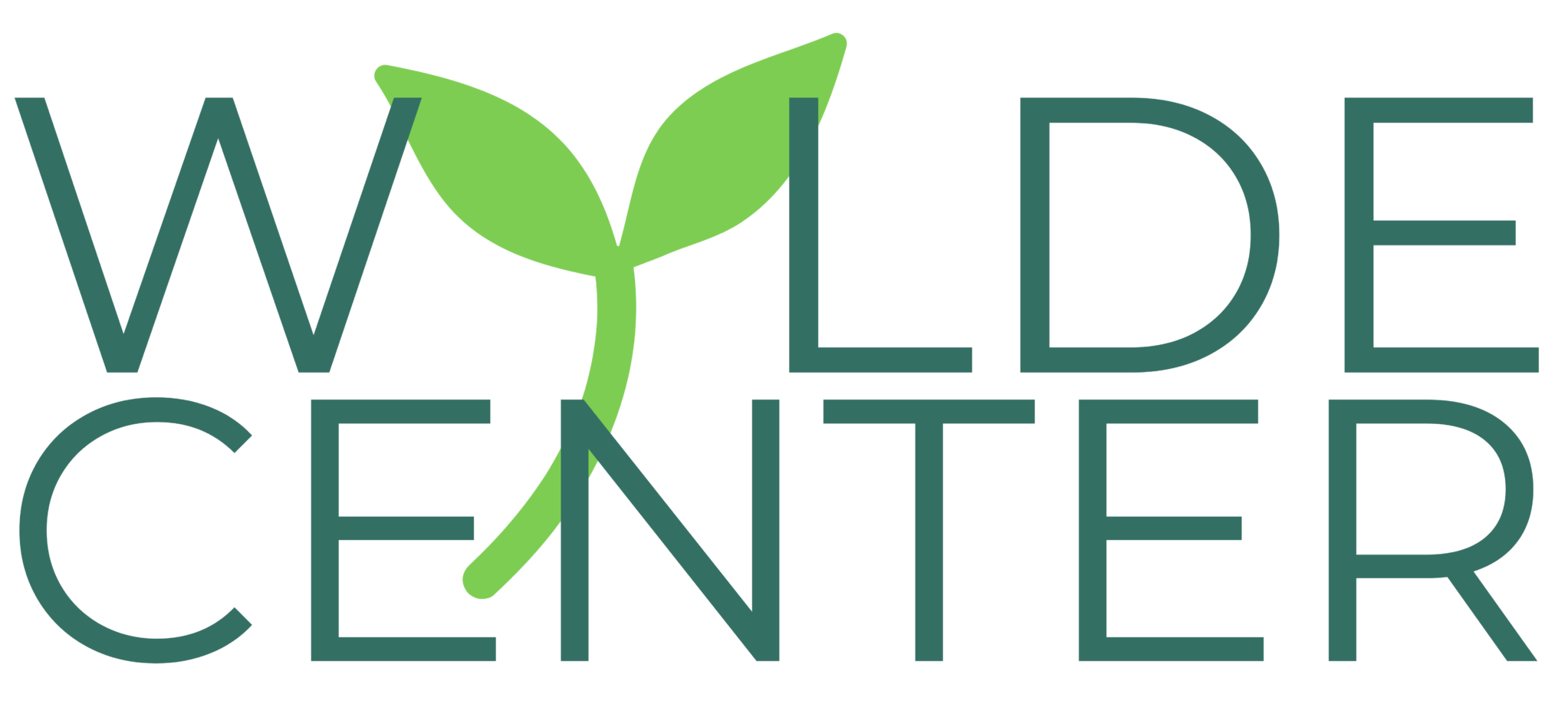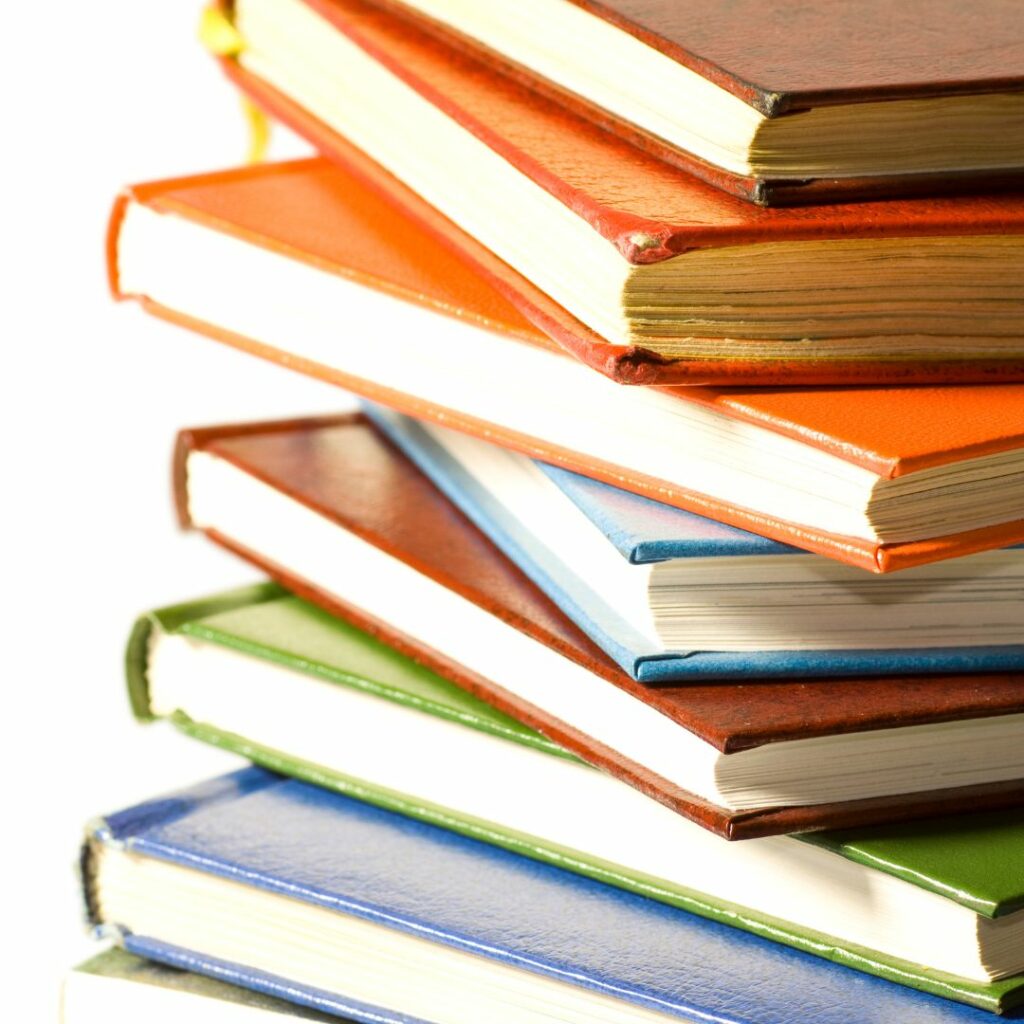by Dory Cooper
As gardeners and outdoor enthusiasts, Winter months require us to slow down and spend more time indoors. Although there are plenty of other ways to relax and pass the time, reading is a great one! There is always something new to learn about gardening, our planet, and how to be a better Farm to School Educator.
Below is a list of book recommendations from Wylde Center’s Education Team. These are all stories, theories, and handbooks that have inspired staff members to be active stewards of our environment, plant a garden, and share what they have learned with others.
Any of these make wonderful gifts to the nature lover in your life. Please consider using your local library or independent bookshop to read or purchase.
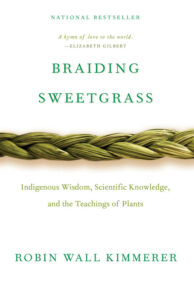
Braiding Sweetgrass, Robin Wall Kimmerer
Recommended by Kwang Mae Cho & Tatiana Gonzalez
Drawing on her life as an indigenous scientist, a mother, and a woman, Kimmerer shows how other living beings—asters and goldenrod, strawberries and squash, salamanders, algae, and sweetgrass—offer us gifts and lessons, even if we’ve forgotten how to hear their voices. In a rich braid of reflections that range from the creation of Turtle Island to the forces that threaten its flourishing today, she circles toward a central argument: that the awakening of a wider ecological consciousness requires the acknowledgment and celebration of our reciprocal relationship with the rest of the living world. For only when we can hear the languages of other beings will we be capable of understanding the generosity of the earth, and learn to give our own gifts in return.
There has also been a recently released young adult version.
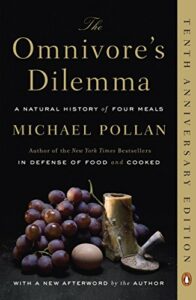
The Omnivore’s Dilemma, Michael Pollan
Recommended by Jack Henry Walker
“What should we have for dinner?” To one degree or another, this simple question assails any creature faced with a wide choice of things to eat. Anthropologists call it the omnivore’s dilemma. Choosing from among the countless potential foods nature offers, humans have had to learn what is safe, and what isn’t, which mushrooms should be avoided, for example, and which berries we can enjoy. Today, as America confronts what can only be described as a national eating disorder, the omnivore’s dilemma has returned with an atavistic vengeance.
The cornucopia of the modern American supermarket and fast-food outlet has thrown us back on a bewildering landscape where we once again have to worry about which of those tasty-looking morsels might kill us. At the same time we’re realizing that our food choices also have profound implications for the health of our environment. The Omnivore’s Dilemma is best-selling author Michael Pollan’s brilliant and eye-opening exploration of these little-known but vitally important dimensions of eating in America.
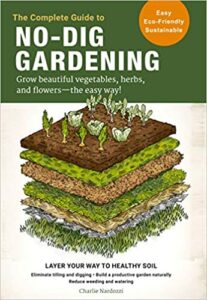
The Complete Guide to No Dig Gardening, Charlie Nardozzi
Recommended by Dory Cooper
With the step-by-step instructions in The Complete Guide to No-Dig Gardening, you’ll discover how to build healthy, easy-to-plant garden soil by adding layers of organic matter using one of several different no-dig techniques. Whether you garden in a small, urban backyard or on several acres in the country, this simple approach lets you grow more food and blooms than ever before, and leave the gas-guzzling tiller behind forever. Plus, when you don’t disturb the soil, weed seeds stay buried deep where they can’t germinate and carbon is kept sequestered in the ground. No-dig gardening techniques also lead to reduced watering needs and a healthy population of beneficial soil microbes that help feed your plants by breaking down organic matter and releasing nutrients.
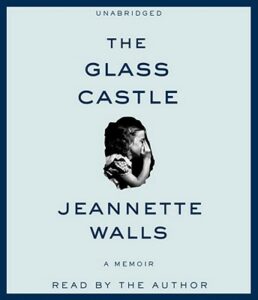 The Glass Castle, Jeannette Walls
The Glass Castle, Jeannette Walls
Recommended by Ernie Stedman
Jeannette Walls grew up with parents whose ideals and stubborn nonconformity were both their curse and their salvation. Rex and Rose Mary Walls had four children. In the beginning, they lived like nomads, moving among Southwest desert towns, camping in the mountains. Rex was a charismatic, brilliant man who, when sober, captured his children’s imagination, teaching them physics, geology, and above all, how to embrace life fearlessly.
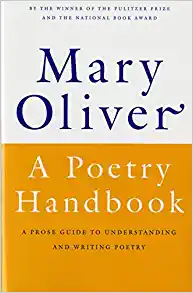
A Poetry Handbook, Mary Oliver
Recommended by Jack Henry Walker
With passion and wit, Mary Oliver skillfully imparts expertise from her long, celebrated career as a disguised poet. She walks readers through exactly how a poem is built, from meter and rhyme, to form and diction, to sound and sense, drawing on poems by Robert Frost, Elizabeth Bishop, and others. This handbook is an invaluable glimpse into Oliver’s prolific mind—a must-have for all poetry-lovers.
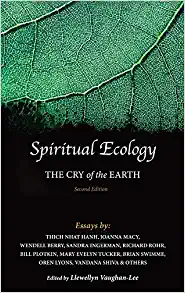 Spiritual Ecology: The Cry of the Earth, Llewellyn Vaughn-Lee
Spiritual Ecology: The Cry of the Earth, Llewellyn Vaughn-Lee
Recommended by Ruth Deli-Oni
It drew an overwhelmingly positive response from readers, many of whom are asking the simple question, “What can I do?” This second expanded edition offers new chapters, including two from younger authors who are putting the principles of spiritual ecology into action, working with their hands as well as their hearts. It also includes a new preface and revised chapter by Llewellyn Vaughan-Lee, that reference two major recent events: the publication of Pope Francis’s encyclical, “On Care for Our Common Home,” which brought into the mainstream the idea that “the ecological crisis is essentially a spiritual problem”; and the 2015 Paris Climate Change Conference, which saw representatives from nearly 200 countries come together to address global warming, including faith leaders from many traditions. Bringing together voices from Buddhism, Sufism, Christianity, and Native American traditions, as well as from physics, deep psychology, and other environmental disciplines, this book calls on us to reassess our underlying attitudes and beliefs about the Earth and wake up to our spiritual as well as physical responsibilities toward the planet.
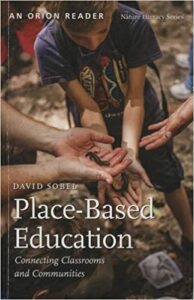
Place-based Education, David Sobel
Recommended by Elizabeth Goethe
Through academic research, practical examples, and step-by-step strategies drawn from classrooms throughout the United States, Sobel celebrates teachers who emphasize the connection of school, community, and environment.
Place-Based Education uses the local community and environment as the starting place for curriculum learning, strengthening community bonds, appreciation for the natural world, and a commitment to citizen engagement.
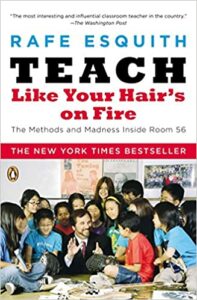 Teach Like Your Hair’s On Fire, Rafe Esquith
Teach Like Your Hair’s On Fire, Rafe Esquith
Recommended by Rosemary Crump-Sims
In a Los Angeles neighborhood, there is an exceptional classroom known as Room 56. The fifth graders inside are first-generation immigrants who live in poverty and speak English as a second language. They also play Vivaldi, perform Shakespeare, score in the top 1 percent on standardized tests, and go on to attend Ivy League universities. The two mottoes in Esquith’s classroom are Be Nice, Work Hard, and There Are No Shortcuts. His students learn to handle money responsibly, tackle algebra, and travel the country to study history. They pair Hamlet with rock and roll, and read the American classics. Teach Like Your Hair’s on Fire! is a brilliant and inspiring road map for parents, teachers, and anyone who cares about the future success of our nation’s children.
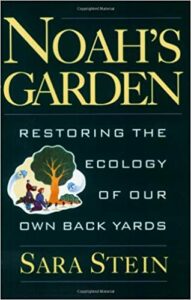 Noah’s Garden, Sara Stein
Noah’s Garden, Sara Stein
Recommended by Stephanie Van Parys
Published to rave reviews in 1993, Noah’s Garden shows us how our landscape style of neat yards and gardens has devastated suburban ecology, wiping out entire communities of plants and animals by stripping bare their habitats and destroying their food supplies. When Stein realized what her intensive efforts at making a traditional garden had done, she set out to “ungarden.” Her book interweaves an account of her efforts with an explanation of the ecology of gardens. Noah’s Garden has become the bible of the new environmental gardening movement, and the author is one of its most popular spokespersons.
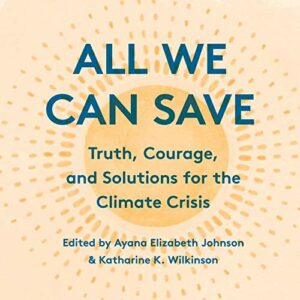 All We Can Save, Ayana Elizabeth Johnson
All We Can Save, Ayana Elizabeth Johnson
Recommended by Mary Jane Leach
All We Can Save illuminates the expertise and insights of dozens of diverse women leading on climate in the United States – scientists, journalists, farmers, lawyers, teachers, activists, innovators, wonks, and designers, across generations, geographies, and race – and aims to advance a more representative, nuanced, and solution-oriented public conversation on the climate crisis. These women offer a spectrum of ideas and insights for how we can rapidly, radically reshape society.
Intermixing essays with poetry and art, this book is both a balm and a guide for knowing and holding what has been done to the world, while bolstering our resolve never to give up on one another or our collective future. We must summon truth, courage, and solutions to turn away from the brink and toward life-giving possibility. Curated by two climate leaders, the book is a collection and celebration of visionaries who are leading us on a path toward all we can save.
